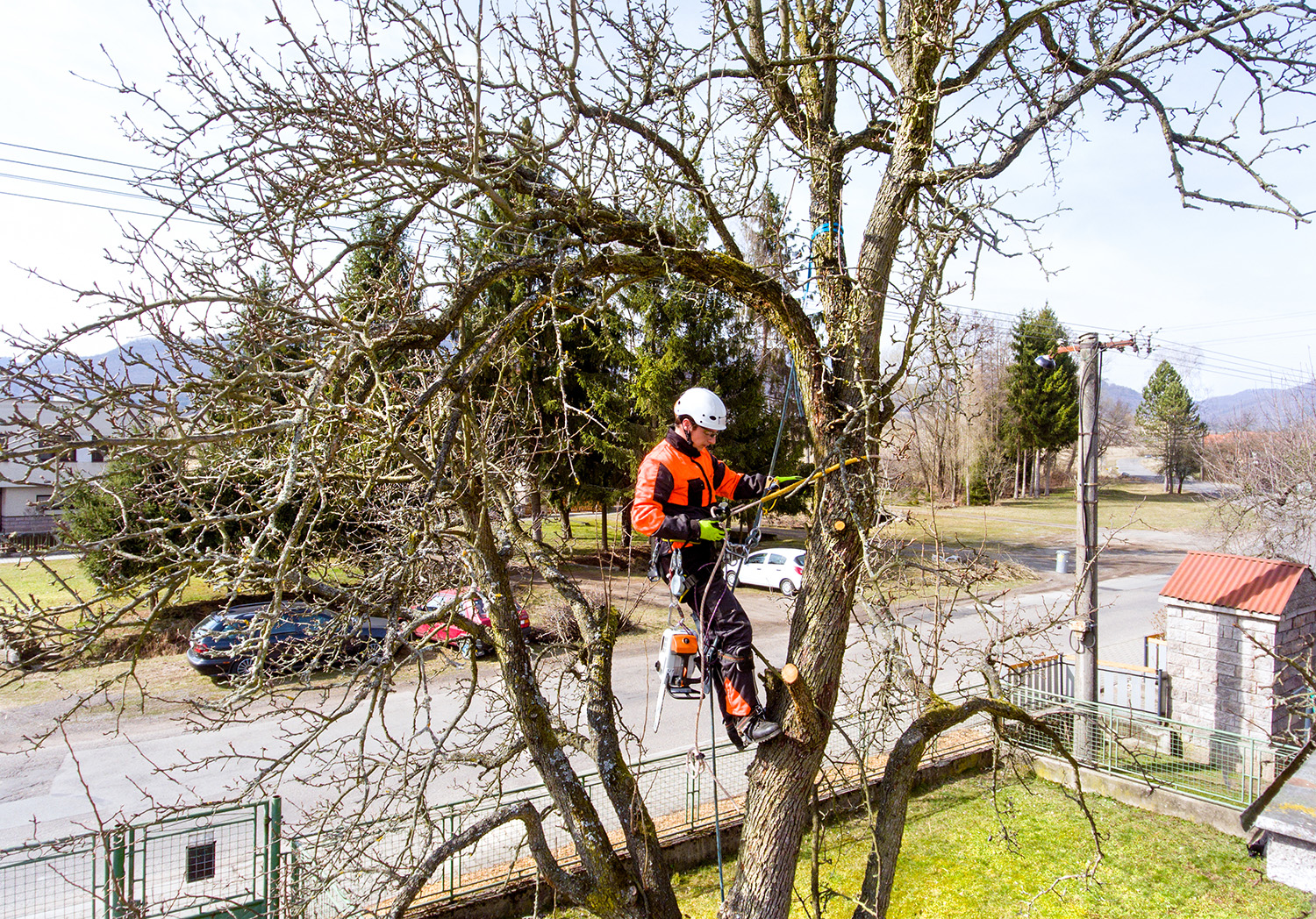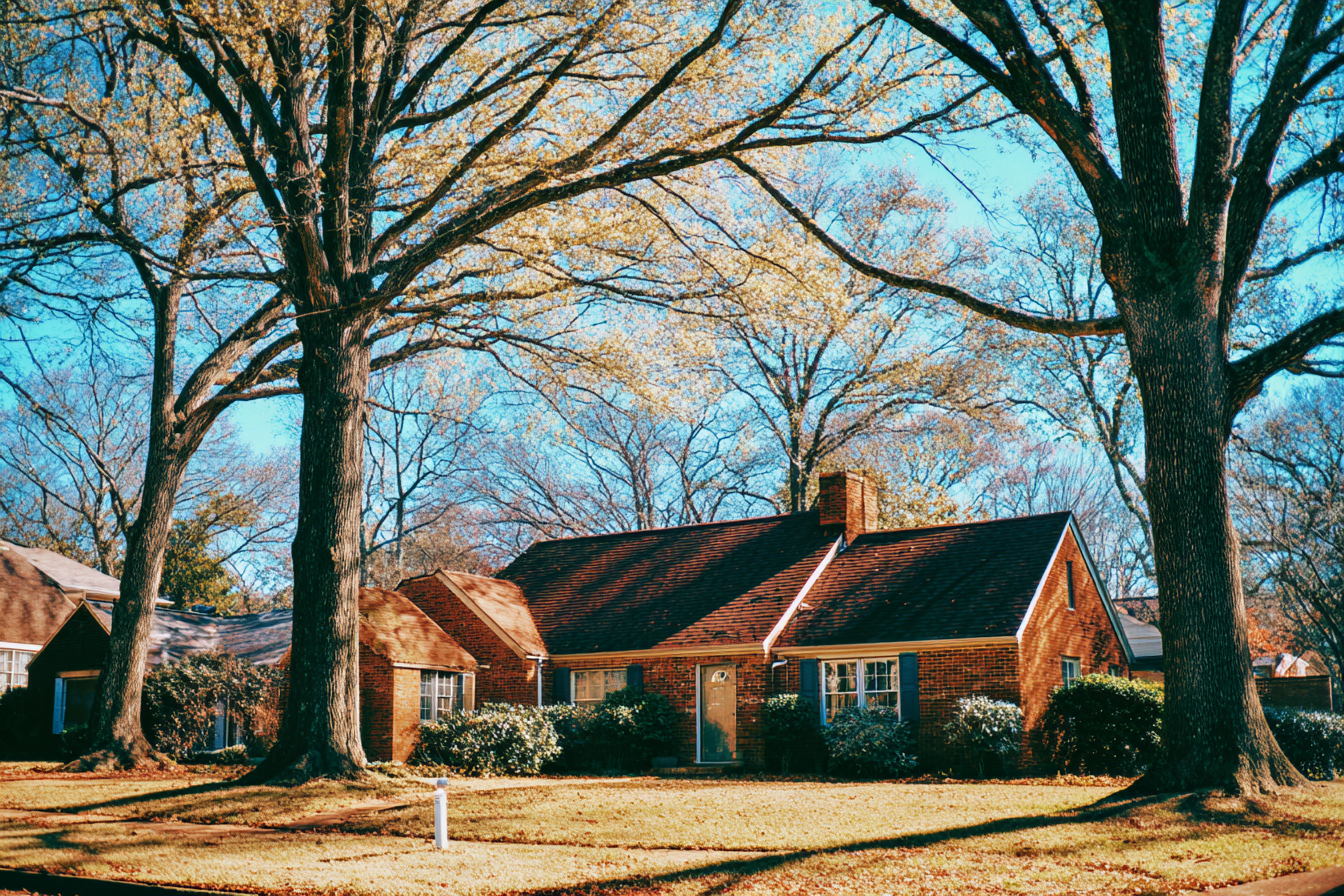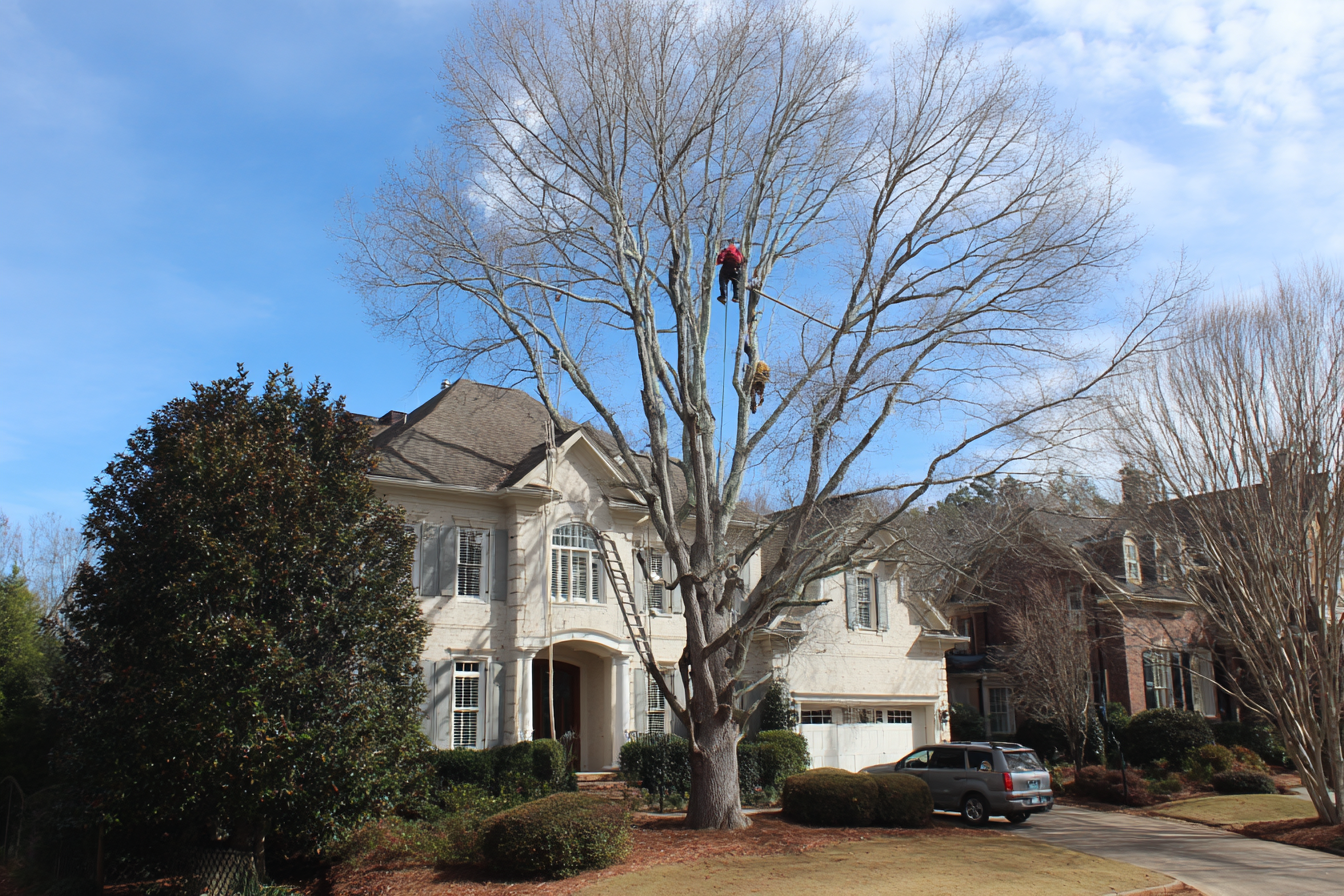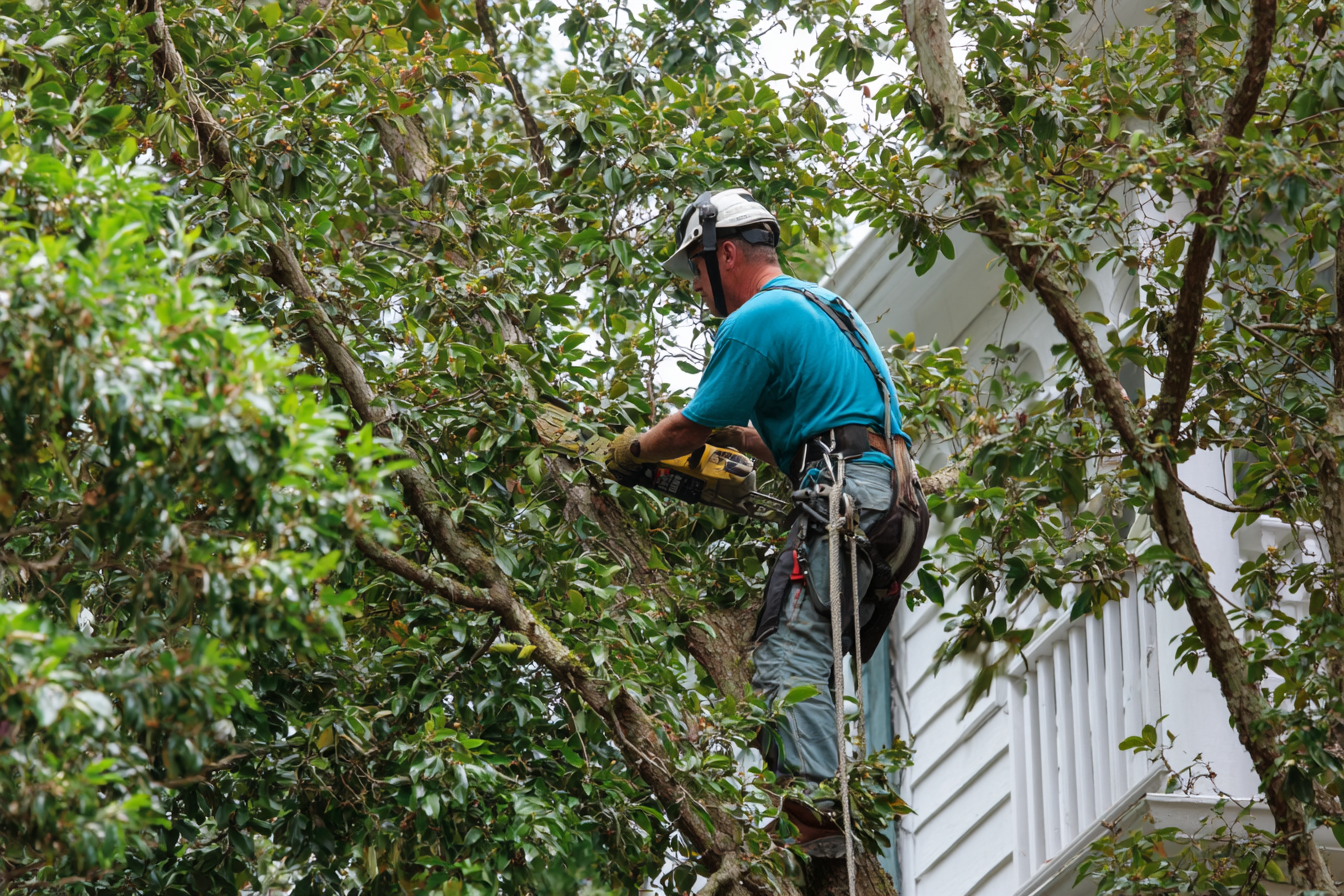
Georgia is a state of stunning natural beauty, and a big part of that is the majestic trees that define our landscape. From the stately oaks in Atlanta to the towering pines of the Coastal Plain, our trees provide shade, beauty, and a connection to nature. But with every tree, there's a responsibility for a Georgia homeowner to ensure it's healthy and safe. A tree that is dying, diseased, or otherwise compromised can turn from a beautiful asset into a dangerous liability.
A hazardous tree is more than just an eyesore; it's a potential disaster waiting to happen. Falling limbs or an entire tree can cause significant damage to your home, vehicles, and other structures, and, most importantly, pose a serious risk to your family's safety.
So, how do you know if a tree on your property is a risk? As a homeowner, understanding the warning signs is the first step toward proactive safety. While a professional arborist is the only person who can provide a complete and accurate assessment, you can perform a basic inspection yourself. This guide will walk you through the key indicators of a hazardous tree so you can take action before a problem becomes a tragedy.
The Most Common Culprits in Georgia
Before we dive into the specific signs, it's helpful to understand what makes a tree a hazard in the first place. For Georgia trees, this often comes down to structural issues, pests, and diseases that thrive in our warm, humid climate.
Structural problems are the most obvious concern. Weak branch unions, for instance, are a major red flag. When two branches grow too close together, they can form a weak, V-shaped attachment. This is less stable than a wide, U-shaped union and can easily split under the stress of a storm or heavy wind.
Environmental factors also play a huge role. Georgia's intense storms, from thunderstorms to hurricanes, can wreak havoc on trees. High winds can snap branches or even uproot entire trees, especially those with shallow or compromised root systems. Poor soil conditions or a lack of water can also stress a tree, making it more vulnerable to pests and diseases.
And speaking of pests and diseases, they are a constant threat to Georgia's trees. Invasive species and native fungi can systematically weaken a tree's structure from the inside out, often with no visible signs until it's too late.

Visual Red Flags: What to Look For
The best way to assess a tree is to start with a visual check from top to bottom. Here are the specific signs to watch for.
1. The Crown and Branches
The crown of a tree is its main leafy canopy. This is the first place to look for signs of trouble. A healthy tree will have a full, dense canopy with evenly distributed leaves.
- Dead or Dying Branches (Limb Dieback): Look for branches with no leaves or needles, or those that have snapped and are now hanging precariously in the canopy. These are often called "widow makers" for a reason. Dead wood is brittle and can fall at any time, especially during a storm.
- Thin or Sparse Crown: If the leaves on your tree's crown are sparse, undersized, or a pale color, it could be a sign of poor health. This suggests the tree isn't receiving the nutrients or water it needs.
- Uneven Foliage: An uneven or lopsided crown can indicate a root problem or a structural imbalance. This is often the case with trees that have a significant lean. The tree might be top-heavy, making it susceptible to failure in high winds.
2. The Trunk
The trunk is the backbone of the tree. Any signs of damage here are a major cause for concern.
- Cracks and Splits: A visible crack running up and down the trunk can be a sign of advanced decay or structural stress. These cracks can be caused by everything from lightning strikes to old wounds that never healed properly.
- Hollows or Cavities: A hollow trunk is a clear indicator of internal decay. While a tree can survive with a hollow core, it is structurally compromised and far more likely to fail in a storm. These cavities can also become home to pests and diseases that further accelerate the decay process.
- Peeling or Missing Bark: While some species, like sycamores, naturally shed their bark, significant peeling or a large section of missing bark can be a sign of disease, pest infestation, or a serious wound. This exposes the tree's inner wood to the elements, making it vulnerable to rot.
- Fungal Growth: The presence of mushrooms, conks, or other fungi on the trunk or at the base of the tree is a major warning sign. Fungi are decomposers; their presence indicates that the wood is rotting from the inside.
3. The Base and Roots
The roots are the tree's anchor. Problems here can cause the entire tree to fail.
- Heaving Soil: If the ground around the tree's base is raised, cracked, or looks like it's shifting, it could mean the roots are failing. This often happens after a heavy rain and strong winds, signaling that the tree is in danger of being uprooted.
- Exposed or Damaged Roots: Visible roots are more susceptible to damage from lawnmowers, construction, or foot traffic. Severely damaged roots can't provide the tree with enough water and nutrients, leading to a decline in health.
- Mushrooms or Fungi at the Base: Just like on the trunk, fungi at the base of the tree are a sign of root decay. This is particularly dangerous, as it means the tree's main anchoring system is compromised.
The Leaning Tower of Georgia
A leaning tree is a huge red flag. While some trees naturally have a slight lean, a significant or worsening lean is a sign of trouble. A sudden lean, especially after a storm, can indicate root failure. If you see a tree leaning over your house, driveway, or a high-traffic area, you should treat it as an emergency. The uneven weight distribution makes it highly unstable and likely to fall in the next storm.

Georgia's Unique Threats: Pests and Diseases
Georgia's Unique Threats: Pests and Diseases
Georgia's climate is perfect for many tree species, but it's also a breeding ground for pests and diseases.
- Pine Beetles: These pests can quickly kill a pine tree. Signs of an infestation include small, sawdust-like frass around the base of the tree and tiny holes in the trunk. A pine tree that has turned a reddish-brown color in the summer is often already dead.
- Dutch Elm Disease: This fungal disease is a major threat to elm trees. It causes leaves to wilt and turn yellow or brown, often starting on one side of the tree.
- Oak Wilt: This is a devastating fungal disease that primarily affects oak trees. It causes rapid leaf discoloration and wilting, and it can spread quickly from one oak tree to the next.
If you suspect your tree is infested or diseased, it's crucial to seek professional help immediately. Early intervention can sometimes save a tree, but often, the only safe option is removal.
Your Call to Action: Protect Your Property and Family
Identifying the signs of a hazardous tree is just the first step. The next is to take action. Never attempt to remove or prune a hazardous tree yourself. This is a job for trained professionals with the right equipment and expertise. A mistake can lead to serious injury or property damage.
If you have a tree on your Georgia property that shows any of these warning signs, don't wait. Contact Georgia Pro Tree Services today for a professional, no-obligation assessment. Our team of certified arborists has the knowledge, experience, and equipment to safely evaluate your trees and provide the best solution, whether it's strategic pruning or complete removal. We are committed to keeping your family, your property, and our community safe.
Call us now for a free quote and let us give you the peace of mind that comes with knowing your property is protected.
FAQs about Tree Hazards
Q: How can I tell if a tree is dead or just dormant?
A: To check if a tree is alive, you can perform a simple "scratch test." Gently scratch a small portion of the bark on a twig or a small branch. If you see green underneath, the tree is likely alive. If it's brown, dry, and brittle, the branch is dead. Remember to check multiple spots on different branches, as some parts of a tree can be dead while others are still alive. However, for a complete assessment, especially for a large tree, a professional arborist is the best choice.
Q: Are all leaning trees dangerous?
A: Not all leaning trees are dangerous. Many trees naturally grow at a slight angle. The danger lies in a tree that has developed a significant or sudden lean, especially if it's over a structure. A sudden lean can be a sign of root failure due to wind or saturated soil. If you notice a change in the tree's lean, or if it's leaning more than 15 degrees, it's time to have it professionally inspected.
Q: What is a "widow maker" and why is it so dangerous?
A: A "widow maker" is a dead or broken tree limb that is suspended or "hung up" in the tree's canopy. It's called this because it poses an extreme risk of falling without warning. The limb is no longer attached to the tree and could be dislodged by wind, rain, or even its own weight. It can easily cause severe injury or even death if it falls on a person, or significant damage to property. These should be considered an immediate hazard and addressed by a professional.
Q: What are the most common signs of tree disease in Georgia?
A: In Georgia's climate, common signs of tree disease include unusual leaf discoloration (e.g., yellowing or browning), wilting, cankers (sunken or dead areas on the trunk or branches), and the presence of fungal growths like mushrooms or conks, especially at the base of the tree. Other signs include thin or sparse foliage and branch dieback. Pests like Pine Beetles and Borers often leave a telltale sawdust-like material or small holes in the trunk.
Q: Is it safe to remove a hazardous tree myself?
A: No. Attempting to remove a hazardous tree on your own is extremely dangerous and can be fatal. It requires specialized knowledge of tree felling, climbing, and rigging, as well as heavy-duty equipment. Professional tree service companies like Georgia Pro Tree Services are trained and equipped to handle these dangerous situations safely. They are also insured, which protects you from liability if something goes wrong. Always leave tree removal to the experts.

We're your local tree pros!
Georgia Pro Tree Services takes the highest quality of care when servicing your trees. Call us to find out how we can help you keep your yard in top shape.



